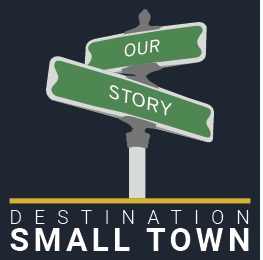Since the founding of our communities, organizations, businesses and citizens have stepped forward to build and serve their community. Click on any of the logos below to learn about those who made this website possible! If you would like to learn about becoming a sponsor CLICK HERE!
- County: Jefferson County, NE
- Region: Southeast NE
- Sponsors
- About Fairbury, NE
- Businesses
- Community Organizations
- Faith Organizations
- Festivals and Events
- Points of Interest
- Veterans
- Visit Website
Learn how to Contribute to any of the above categories.
No news yet. Got some news? Hit that NEW POST button!
About Fairbury, NE
Fairbury is at the heart of the Oregon Trail. Many settlers passed through the area on their way to conquer the west. The deep ruts left by their wagons are still visible today. Rock Creek Station, just southeast of town along the Oregon Trail, was an important way station for those traveling the trail. Nebraska proved to be the most difficult and deadly portion of the journey, so rested animals and provisions were important. It was here that Wild Bill Hickok began his infamous gunslinging career, by shooting a man over a money dispute. The story became legend as dime novels and Harper's Bazaar told of a wild tale of murder and intrigue along the Trail.
James B. Mattingly, a frontiersman and freighter from Kentucky, first settled in Gage County, Nebraska, but with the coming of the settlers and the prospects of a railroad being planned along the Little Blue River, he gave up on freighting and built a small saw mill along the banks of the Little Blue to take advantage of the town site opportunities. Woodford G. McDowell, a capitalist from Fairbury, Illinois, also foresaw the advantages of a railroad coming through Nebraska and came to claim 160 acres. Each gave 80 acres of land for a town site, the north and south streets from First to Eighth, and the east and west streets from A to H streets. Right in the middle they left a block for the Public Square, half on Mattingly's land and half on McDowell's. They chose McDowell's Illinois town of Fairbury for a name and thus was born the city of Fairbury, Nebraska in the year 1869.
Fairbury was a town built on speculation. The early pioneers were the first to recognize Fairbury's potential by platting a town in anticipation of the railroad. With the coming of the railroad came explosive growth and prosperity, a place where people could test their ideas and launch their dreams. The Rock Island Railroad Depot is a symbol of the importance of the railroad to Fairbury's history. Now a Railroad Museum, many rail enthusiasts come to study the history and locate friends and relatives who worked for the railroad by searching the archives located there.
Fairbury, at the turn of the century, was home to the Campbell Bros. Circus. At one time, the Campbell Bros. Circus was the second largest circus in the world, featuring many daring acts and exotic animals. From 1885 to 1913, the circus winter-quartered in Fairbury and each spring, at the beginning of its show season, a circus parade was held downtown featuring juggling acts, acrobats, circus animals and a daring hot air balloon launch. The circus traveled by train throughout the country and was the model by which many modern-day circus acts are patterned after.
The Campbell Brothers Circus parade is also the subject of a full-scale mural painted on the north side of the Globe Rexall Drug Store at the corner of 5th & E Streets in Fairbury’s Downtown Historic District, painted in 1993 by Geoff and Echo Easton of Crete, Nebraska and Greg Holdren of Friend, Nebraska and commissioned by Bob Atkins, owner of Globe Rexall Drug. The mural, which measures a massive 140 ft x 38 ft, contains many historically-accurate elements depicting buildings, businesses and the circus parade as they appeared around 1900.
Fairbury's large inventory of historic buildings was built during the 1920's and most still exist today. Fairbury's downtown historic district was listed in the National Register of Historic Places in 1994, boasting one of the largest inventories of historic buildings in the Midwest. Fairbury possesses 125 blocks of brick streets, and the streets themselves are also listed in the Register.
Experience for yourself Fairbury's rich past, and join us as we look toward the future.
Businesses of Fairbury, NE
The businesses of our towns are truly the lifeblood of each community, click on any businesses below to learn about them, to learn how to add your business to your town and county page CLICK HERE!
Jefferson County, NE
Visit our county page and you will find information about our town and county's points of interest, festivals/events and faith community. You also will learn about the community organizations that have built and continue to build strong communities (chambers, community groups, and departments, etc) and much more when you visit the Jefferson County, NE page.
